TasWeekend: Start the year full of good intentions
Are your New Year’s resolutions already crumbling? Setting goals is an art and there are strategies to get you back on track for 2019.
Lifestyle
Don't miss out on the headlines from Lifestyle. Followed categories will be added to My News.
HANNAH Moloney, 35, may not make New Year’s resolutions, but she radiates good intentions. “I am not against resolutions,” says the permaculture designer and teacher. “But I don’t wait for New Year’s Eve to make any kind of big decisions. Why limit that to one day when you can have all the days?”
Growing up on a city herb farm in Brisbane, Moloney was set on her life course early. With a passion for growing sustainably on small plots, she has worked in urban agriculture throughout her adult life. “I have no desire for a big farm because I know you don’t need a lot of land to grow the food you need and have an amazing life and family around that,” she says.
Moloney brought her skills to Hobart seven years ago, when she moved to Tasmania after a long love affair with the island that began when she was still living in Queensland.
Today she runs Good Life Permaculture with her partner Anton Vikstrom, teaching others hands-on skills “to lead the good life”. “We do reflect at the end of the year,” Moloney says when we meet at her spectacular half-hectare property on New Year’s Day. “We think about the highs and lows, what we’ve gone through and where we are going. But we do so much reflection throughout the year that it’s more of a continual process for us. We are always reviewing things: let’s change stuff or let’s keep doing what we are doing because it feels good.“
The couple’s main course for permaculture design runs over two weeks. Their short workshops cover everything from growing food to beekeeping and beer brewing. They also lead community development projects and specialise in permaculture gardening and food system design.
They live with their four-year-old daughter Frida in a pink weatherboard home high on a hill in South Hobart with panoramic views over the city. A rambling vegetable garden, a proliferation of perennial food plants, bee hives, goats and chooks complete the scene.
Moloney says her aim to live by the permaculture values of earth care, fair share and people care informs her goal-setting. The couple rely on guided decision-making when visualising and plotting their way forward, both for their business and family life, always mindful of the relationships between elements.
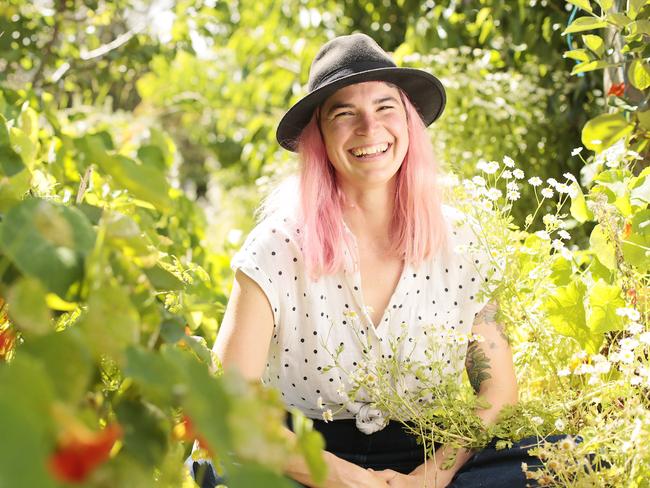
The framework they use, Holistic Design Decision Making, was developed by former philosophy academic turned permaculture design consultant Dan Palmer, who drew on principles developed by holistic farming guru Allan Savory, the Zimbabwean ecologist and cattle farmer who championed intensive cell grazing for livestock. Since adopting the framework three years ago, Good Life Permaculture has included it in its workshop program.
“It’s an approach anyone can use to steer their life projects towards happiness, health and wholeness,” Moloney says. “It has changed things for us in that as a family of three we can now be on the same piece of paper and share the same vision.
“It’s been really great. How we work and live now is much healthier. Once I would say yes to everything and try to do everything, sometimes not terribly well as I was spread too thin. By using the decision-making tool, I can ask: if I make this decision, will it have a positive, negative or neutral impact on our quality of life or our work systems?”
The framework has three key stages. The first is clarifying what you are managing or making decisions about.
“This could be anything from your own life as a whole, as a family, your business or a project,” she says. The second element involves tuning into what you most want from the thing you are managing, how you’d like to navigate the path to it, and what you will need if you are to reach the place you want to be.
Then come the decisions that propel you towards the desired thing and the actions that lead you there. Staying open to feedback is part of this third stage. As part of her reassessment, Moloney decided to say no to most opportunities to travel interstate for work, sticking tight at home instead.
“It’s not good for our family, it is definitely not good for our vegie garden, it’s not great for our goats, our community or our business. Professionally, it may not look like a smart move because I am not networking and putting myself out there, but it is not worth it to do so.
“There is a great saying: rather than doing bigger and better, just do better. We have a grounded view on how to run a business and how to live a life. We keep it simple. When I think about what drives my personal values, it is about living well and doing things that are of benefit 100 or 200 years down the track. I ask myself: is [that action] of benefit to that future or am I taking away from that future? It is a simple concept but a powerful way to live your life.”
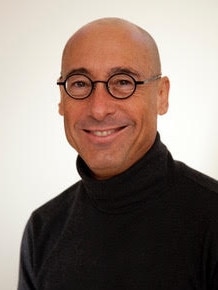
PRIDE AND SHAME
Ambition is not a dirty word, says US psychotherapist and author Joseph Burgo, but much rests on how worthy and realistic those ambitions are — and how we go about pursuing them. Burgo says when we put more store by competence pleasure — the positive feelings we experience when we achieve — and less faith in blithe self-acceptance, we are more likely to feel good about ourselves.
There’s no point telling ourselves we are fine just the way we are if the reassurance is hollow, says Burgo. It’s a great way of developing false pride though.
It is a sparkling New Year’s Day morning in Hobart when I call Burgo and still the last afternoon of 2018 in his time zone, the small desert resort city of Palm Springs, California, about 170km from Los Angeles. Burgo is planning a night in, avoiding the “forced and artificial” revelry he associates with New Year’s Eve shindigs. “I don’t like big parties,” he says. “I prefer to spend my celebrations with a few people I know well.”
He is not a fan of grand New Year’s resolutions, either. “People make ambitious goals and usually fail at them. I think we often set ourselves up for shame experiences by aiming too high.”
Shame is a subject that fascinates Burgo. The clinical psychotherapist, who conducts all his client sessions over Skype these days, is the author of six books, including a nonfiction title on narcissism and three novels. His latest, Shame: Free Yourself, Find Joy and Build True Self Esteem (Pan MacMillan, $32.99) has just been released internationally. It is the result of a decade of research, thinking and writing about shame, about which he also writes a blog for Psychology Today.
Shame is a difficult emotion, he says, and most of us do what we can to avoid it. But shame is a teacher, too, with life-changing lessons to offer regarding goals and values and developing authentic self-esteem.
“It is human nature to feel pride in relation to achieving goals,” he says. “Look at babies and how intent they are on doing things and how good they feel when they succeed.”
That satisfaction can continue throughout life if we set realistic goals and work methodically towards them.
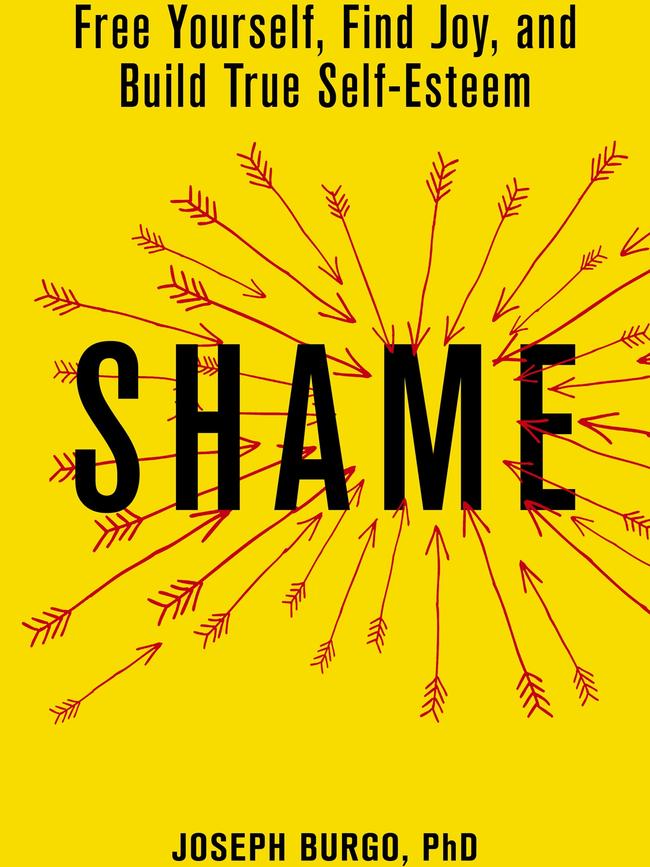
“They don’t have to be grandiose goals, but we have to have expectations of ourselves and live up to them. And that’s not a popular idea. The view of self-esteem that predominates in my field is self-love and self-acceptance: ‘You are beautiful just the way you are’ is the dominant view.
“My view is: No, you have to live up to the values you hold to feel good about yourself. You don’t get to feel good about yourself just because. It’s not a given. It is by being the people we expect ourselves to be and through having goals and expectations and working towards them that we ultimately feel best about ourselves.”
That is why it is so important to have the right goals. “Making a resolution you are unlikely to achieve is a really bad idea because it can lead to shame rather than pride. When shame kicks in, some people just kind of cave and feel horrible about themselves and give up trying.
“That’s what’s so horrible about these New Year’s resolutions. When you expect to do something impossible and then feel bad about yourself it undermines your resolve going forward. But if you can bear the shame, sometimes it has something to tell you. And often that is that your expectations are way out of alignment with your potential.”
It sounds harsh and at odds with so much of what we are told, but sometimes it is better not to reach for the stars. “If you have been fighting with your weight your whole life and your New Year’s resolution is to lose 30 pounds, starting now, you are not going to achieve it, and it will likely end with you comforting yourself with food.”
Burgo advocates breaking goals down into lots of small steps, and putting time into preparing for a solid plan of action. “Often the most successful weight-loss programs begin with becoming aware of your eating patterns,” he says. “So a step in the right direction would be to begin the New Year by writing down what you eat every day.”
Burgo is lavishing special attention on two areas of his life this year. “I may not have New Year’s resolutions, but every year I do have intentions.” At 63, he says he keeps himself pretty fit, but he is feeling the need to limber up. “At my age, I need to stretch,” he says, “and I plan to adopt a yoga habit this year.”
Another activity he is planning to make time and space for in coming months is playing the piano daily. “One of my intentions for this year is to learn how to improvise at the piano instead of being wedded to the notes. I spend a lot of time learning a few pieces and I want to be freer, not such a perfectionist. That seems like something I can work on during the year. I think there are opportunities to succeed and feel good about myself all along the way. It’s not a make or break thing and it’s that nature of New Year’s resolutions I object to. There are too many opportunities for failure.”

HOW TO FLOURISH
Hobart leadership and career coach Katherine Street, of People Flourishing, agrees that grabbing a goal and jumping straight into action yields the desired result less often than a considered approach.
“Say the goal is around being fitter. People get up on January 1 and want to go for a run.”
It may look resolute, but will they still be doing it in six months’ time? Probably not. If, however, they were to pause, and set up five to seven strategies to scaffold the development of their new habit, chances are they will still be heading out for that run at this time next year.
When setting goals, which usually have an end date, and developing new habits, which do not, Street says it is important to embed contingency thinking, so we know what to do when we come up against obstacles. “Habit gets built step by step by step. You’ll have setbacks. Expect them.”
She says the WOOP model is useful to employ when they appear. The self-analysis process starts with four steps, with three leading questions — What is your wish, what is the best outcome, what is your main inner obstacle — and an instruction, to make a plan to overcome your obstacle. This is when “If … [obstacle], then I will … [action or thought]” comes into play. (See more at Woopmylife.org)
Like Moloney, Street embraces a holistic approach to life and career. “We are full human beings,” she says. “We are not just our career or our role. Often people I work with will say they want a new job, but it isn’t about a new job only. It’s about the way they want to contribute to the world. Taking a more holistic approach allows you to develop your career and be more authentically who you are.”
In her upcoming book, In the Loop, Street outlines strategies for flourishing, especially in your career. A big part of that is about making effective decisions and developing the habit of reflecting every six months on who you are and what you need to do next. The second half of the book is devoted to finding the right job for you. (You can read her blog at flourishing.com.au)
If you want to change in 2019, but find yourself procrastinating, Street says poet and author Brian Christian’s 37 Per Cent Model is one decision-making tool worth considering. While it’s all fine and well to take a pause before leaping into that fitness program or next big decision, how long should you actually wait?
In his Algorithms to Live By seminar series, Christian talks about when to stop looking for your ideal job, partner or apartment. When to look and when to leap depends on how long you expect the search to be.
The answer generated by computer science, he says, is that the optimum stopping time is 37 per cent of the way through your search period. After that you should take the next option that meets all your criteria.

HEAD AND HEART
Leadership and adult development coach Steve Willing spent New Year’s Eve with friends at a barbecue in Hobart. When the conversation turned to New Year’s resolutions, he found himself thinking about why people so often fail at them.
“What is needed to change a habit is not just thinking about what we want to change, but stimulating an emotional craving for the reward of it,” he says. “Without a desire for the reward there is no anchor in our motivational centres.”
He advocates working out what you really want from your goal. “It has to be a desire from our heart to stick for long enough for [the change] to move from being a novel strange action to a regular action to a habit that is subconscious. This can be applied to everything to changing a diet or the way we talk to other people. We have to ask what this change will bring to ourselves and to the world.”
Willing has been a professional change facilitator and leadership coach for more than 25 years and over that time has seen many people jack up when confronted with hard rules relating to resolutions. He prefers subtle reorientation over time than dramatic change on January 1.
“The New Year’s resolution is making a new rule for ourselves,” he says.
While rules are appropriate for children and adolescent developmental stages, as we gain in wisdom and maturity a hard rules-based approach tends to be self-limiting. “As we grow in perspective, we don’t need to impose rules on ourselves every New Year’s Eve,” he says. “A wiser, gentler and lighter way is to create intentions.”
He describes January as a good time to reflect on “how can I be more of myself and less of what I think others want me to be”. In his own life, Willing intends to create “spaciousness” this year. “The last couple of years have been very crowded for me. With work, moving house and so much study, I have felt my cognitive capacity and decision-making capacity suffer and I haven’t been as available to family and friends as I could be.”
For readers seriously interested in developing positive new habits this year, Willing recommends finding a copy of The Power of Habit. Looking at the neuroscience of habit-forming and the habits of highly successful individuals, the book by New York Times business reporter Charles Duhigg is an in-depth look at how habits work with or against us. Using case studies to demonstrate people’s enormous potential for transformation, Duhigg explores why some people and companies struggle to change while others remake themselves seemingly overnight.
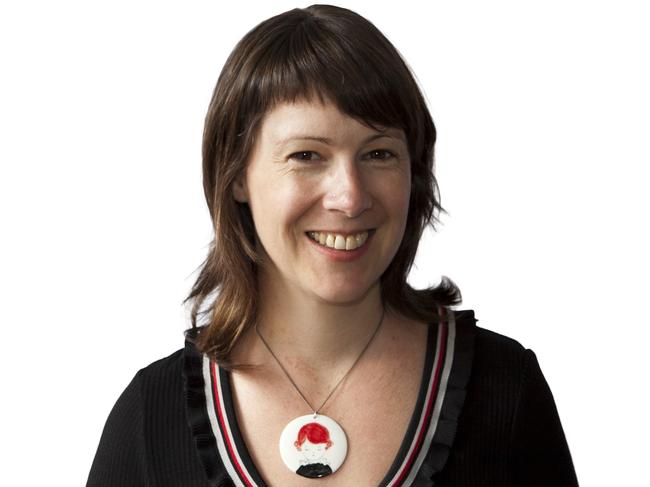
DRIVING CHANGE
Angela Driver recognises the power of habits to change lives. And she is excited by research showing a level of brain plasticity that enables deep change.
“There is so much [evidence] showing the capacity of rewiring our brains in habit-forming,” says the general manager of the Tasmanian Leaders Program, a not-for-profit organisation which is sponsored by government and the corporate sector to run leadership programs.
Driver, of Launceston, says embedding new habits is easier than consciously trying to change existing habits. “An old habit is like a freeway,” she says. “It can be easier just to create a bypass around it. So think about the new habit, not the habit you want to change.”
She says many people go off-track when they encounter hurdles. Developing strategies for overcoming obstacles should be part of early planning. “We almost treat New Year’s resolutions as wishes — “I wish to be thinner” — as if an elf is going to come down and grant the wish.
“But what we are missing is the resolve, the grit. It’s a paradox between having a growth mindset and realising there are going to be some harder times. We need to be realistic, break goals down into clear steps, and really understand what obstructive behaviours and competing goals can get in the way.
“Say you want to save money, but you also feel you would like to treat yourself because you work hard. Until you address this [anomaly] your goals are in conflict. Going through a process to name those competing commitments, then experimenting to test all your big assumptions for accuracy, helps you to see what’s getting in the way and find the way forward.”
So, what to do if you are already developing a difficult relationship with a December 31 pledge to yourself? Pick that goal back up again, says Driver, and hold it to the light.
“Ask yourself is it the right goal? Why was it right on January 1 but not now? Maybe you had the how but not the why, or the why but not the how. Try to get those things lined up. And if you are really serious about it, keep your attention on it. Apply repetition to it and build in some accountability by sharing the idea with friends and family.”
Overcoming Immunity to Change is a psychological process she finds useful. Developed by Harvard professors Lisa Lahey and Robert Kegan, it facilitates participants through steps to generate detailed information that helps them define their goals. Participants then use the information to develop strategies.
The first step is identifying top-priority self-improvement goals: on a scale of 1-5 of importance, they should rate 4-5. It is best if the goals are stated affirmatively. For example, if you were addressing your perfectionist tendencies, you could ask ‘what’s the thing you’d like to get better at’. It might be to get better at discerning when to hold such high standards.
And then, says Driver, it might be a case of applying the 80:20 rule, a rule of thumb predicated on the notion that 20 per cent of your effort delivers 80 per cent of the result, and prioritising accordingly.
The second step, once a goal is clearly and affirmatively defined, is to consider what you are doing or not doing that works against your goal. In Driver’s experience, there is no one-fits-all solution.
“In general, though, after the TasLeaders course participants are a lot clearer on their purpose and value. They have built their self-reflective techniques into their leadership tool kits, and coming out the other end, their goals are the right goals.”
The main course is a year-long mentoring program for 24 participants annually. TasLeaders also offers a short leadership course in conjunction with industry, I-LEAD, which provides some scholarships.
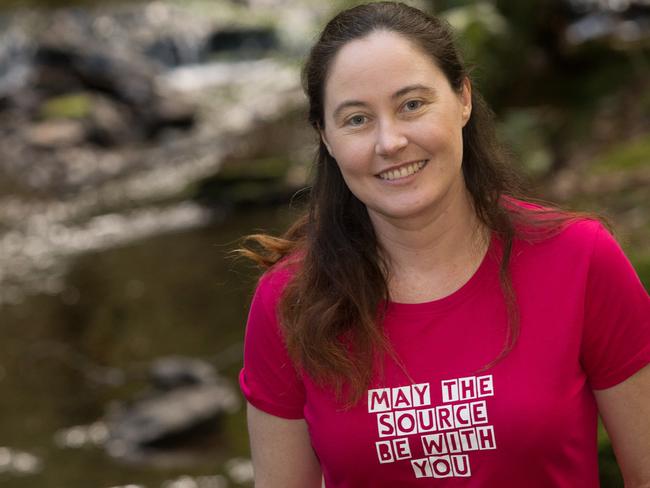
POWERING ON
When tourism entrepreneur and new Derwent Valley councillor Rachel Power was mentored through the I-LEAD program last year, it gave her a lot of faith in her goal-setting approach and helped her articulate her underlying motivations.
“The result of the first weekend was clarity,” says Power, who runs Waterfalls Cafe & Gallery at Mt Field National Park and Mountain Cafe at nearby Maydena. Rachel and her husband Greg, a photographer, also have a souvenir merchandise range, Van Diemen Designs, and Greg runs photographic tours. The couple also have big plans to develop accommodation and a conference centre on land they own just outside the national park boundary. Visitation to Mt Field has grown exponentially in recent years, and that is partly thanks to their offerings and their role in promoting the destination.
“At the first I-LEAD weekend, in Launceston, I had a real ‘a-ha’ moment,” says Power. “After that I came home and actively removed myself from the business. I still wanted to influence, but I needed to let the staff shine. In the I-LEAD program, they call it ‘coming up onto the balcony’. If you are down on the dancefloor it looks like everyone is having a great time, but up on the balcony you can see the whole party.
“It’s the same in business when you are in the day-to-day and not growing or focusing on the other high-level things that need to be done, but [in my case] spending a lot of time making coffees. I knew the effect that was having and where my value was — marketing, PR [public relations] and social media is where I needed to be.”
Though employing managers to run the day-to-day operations, Power is still integrally involved at Waterfalls Cafe and trains all the new staff, many of whom are local school-leavers who do not intend to go on to college when they apply for seasonal work at the cafe.
“A lot of Glenora kids don’t go on to college, but bringing them on through seasonal work is the ‘why’ that connects me to my goals. When everybody’s hours drop at the end of the peak tourism season over summer, 80 per cent of them go on to other employment or education.
“I get out of bed every day and love what I do. I know what my ‘why’ is. Everything flows from that.”


